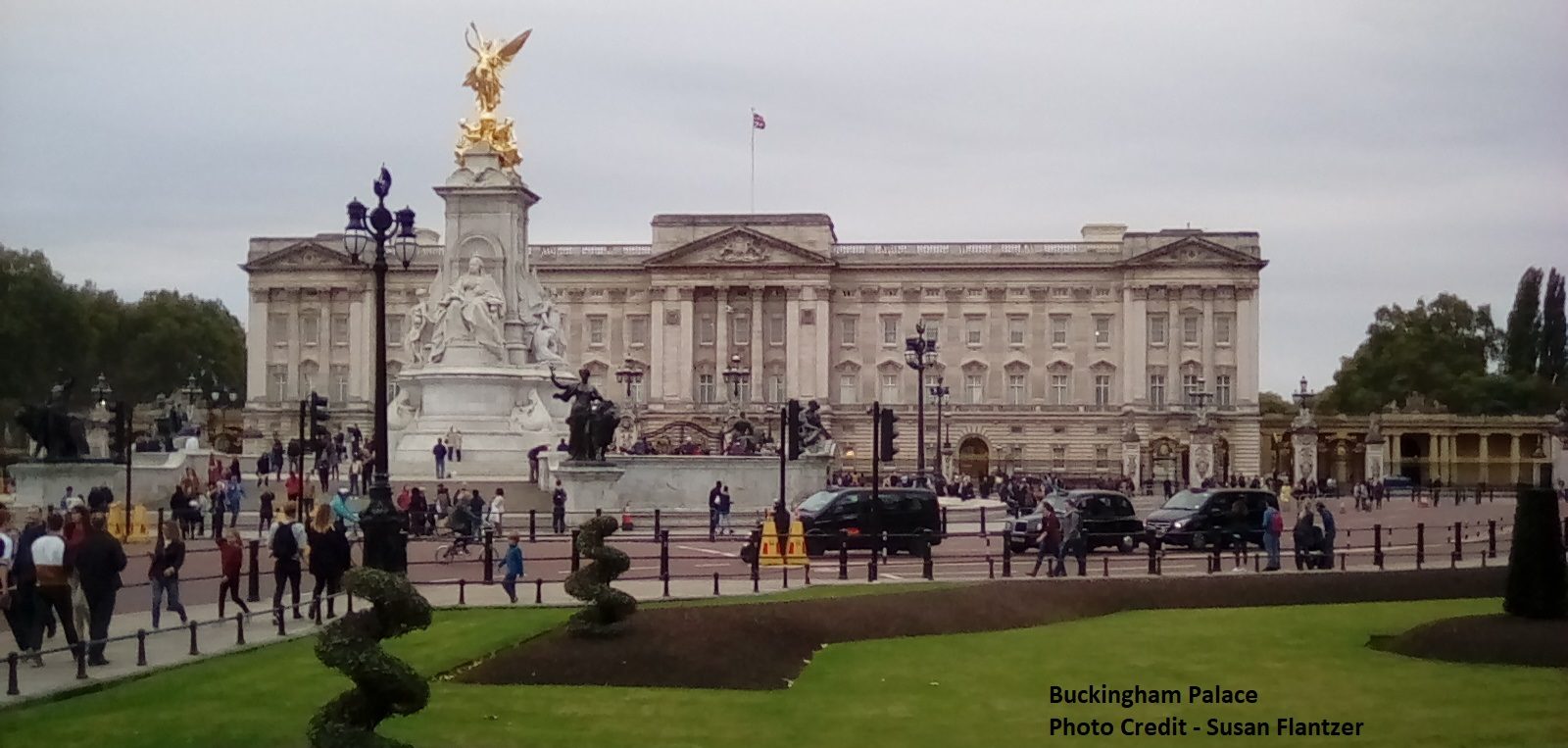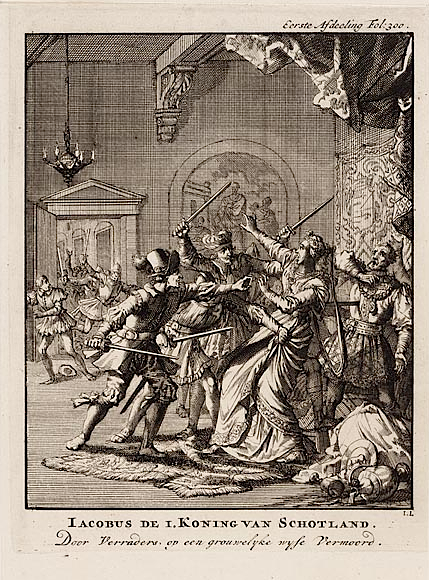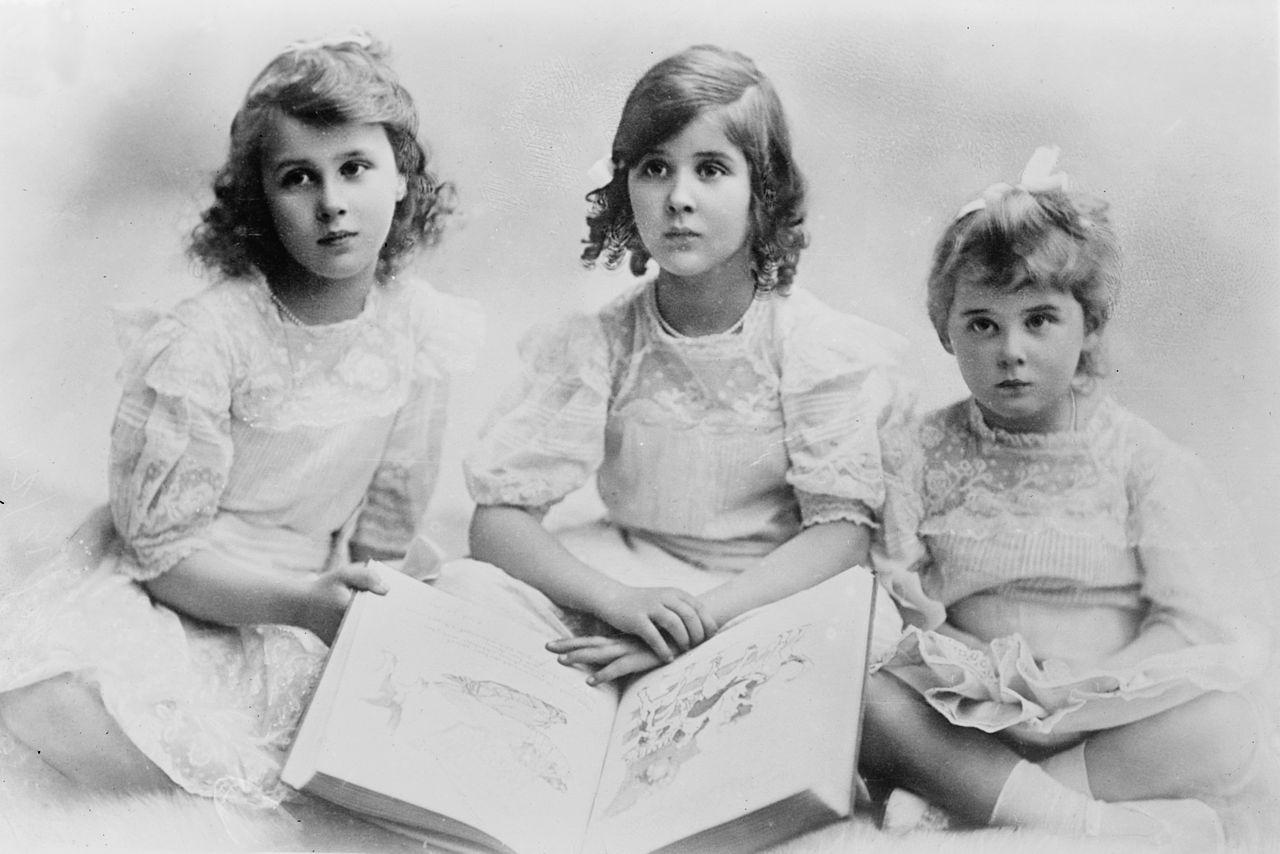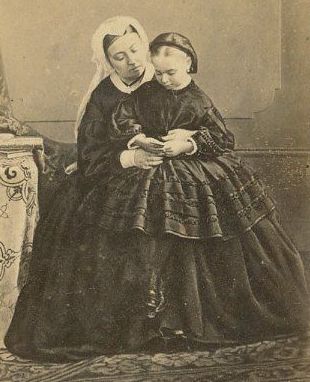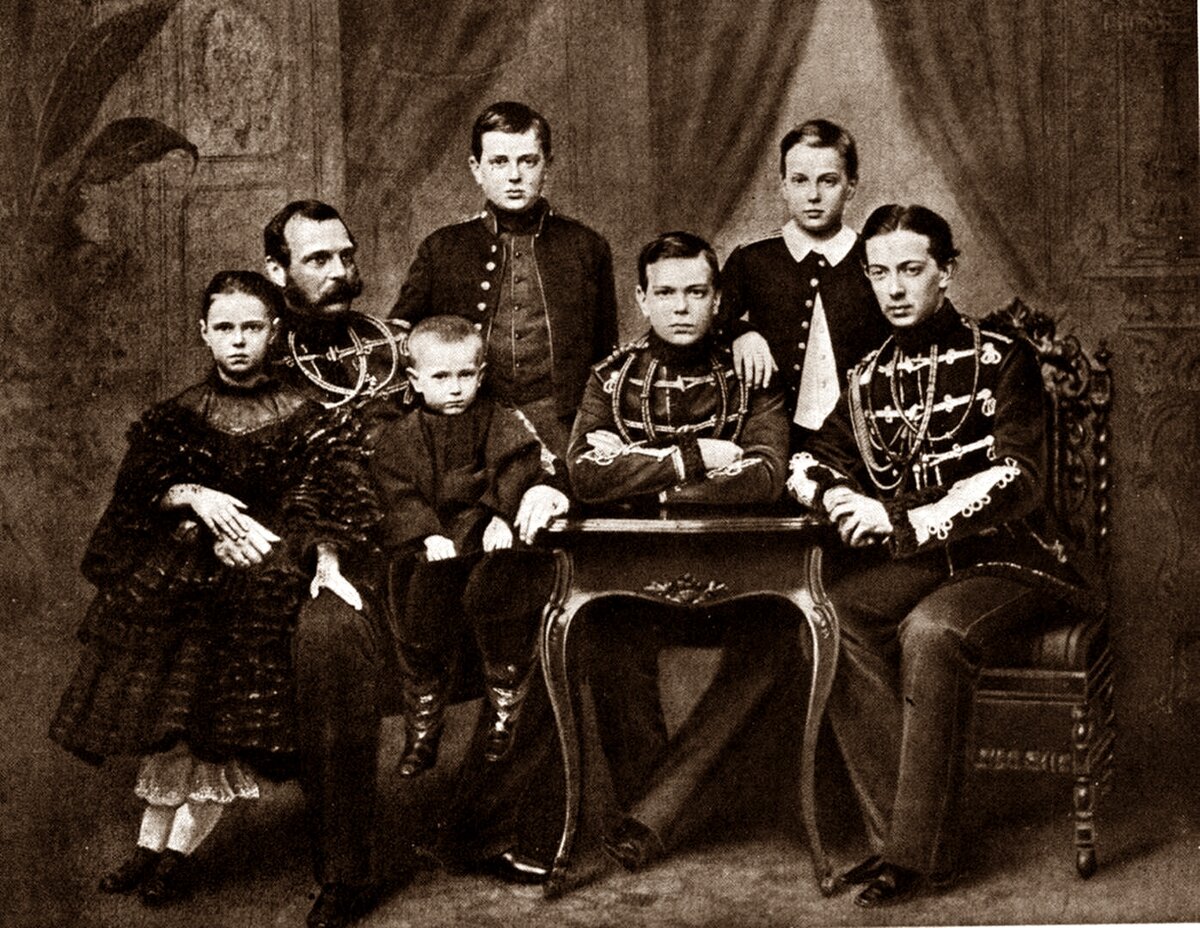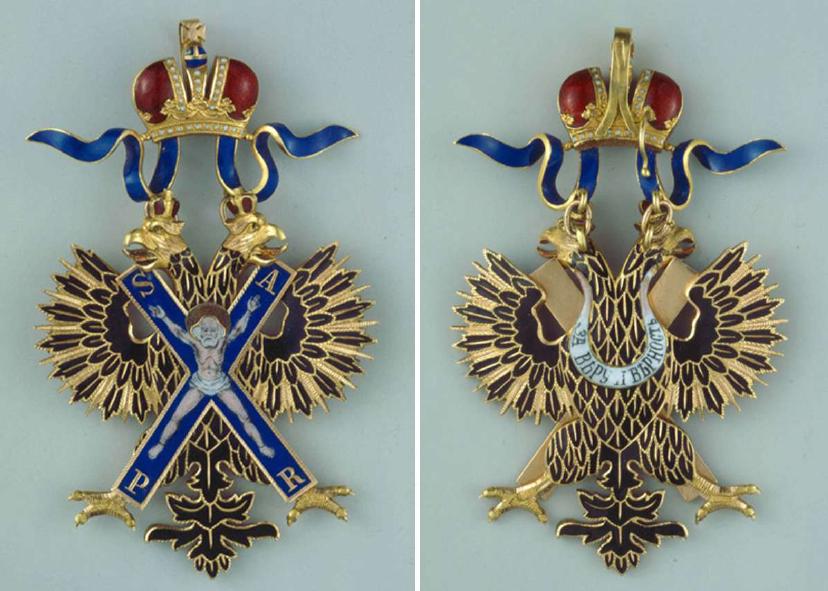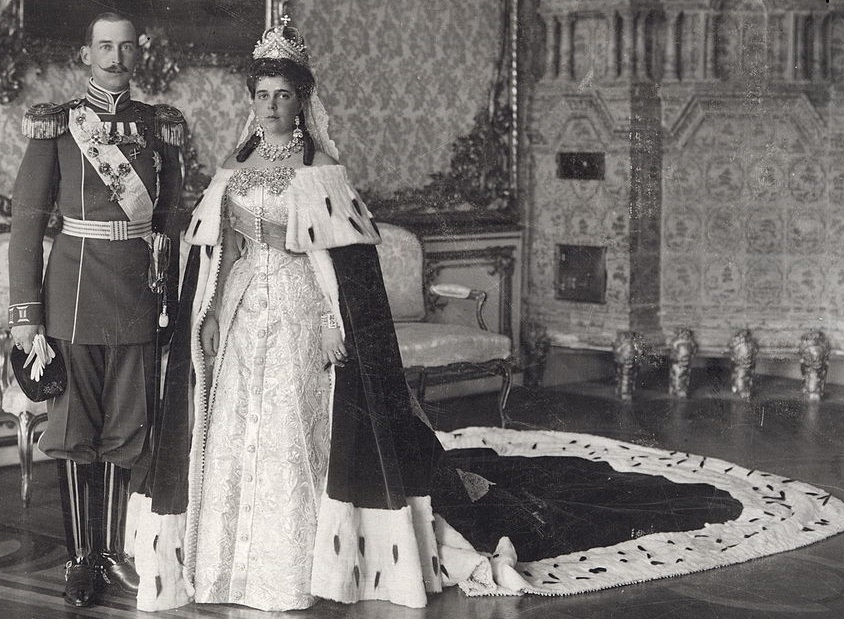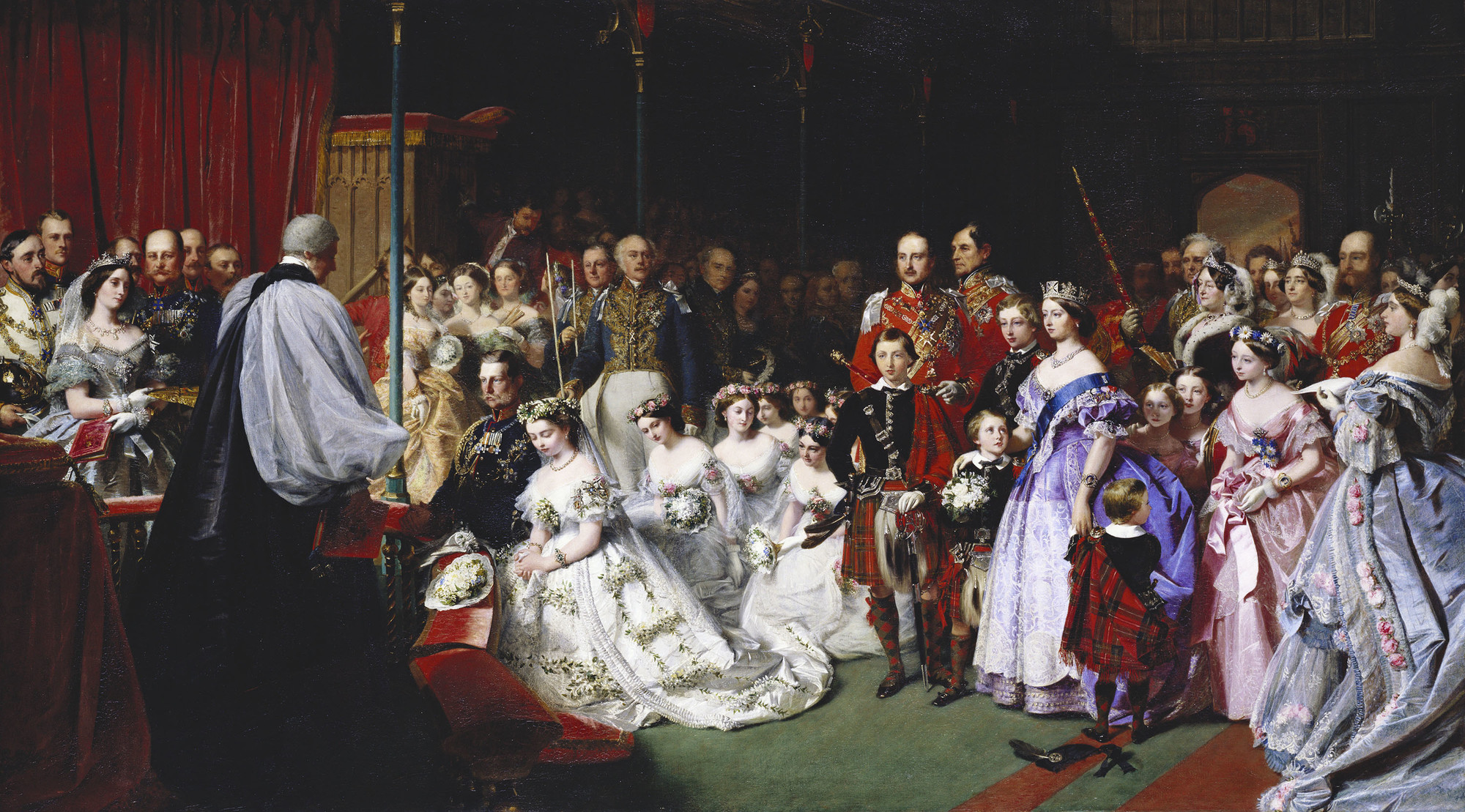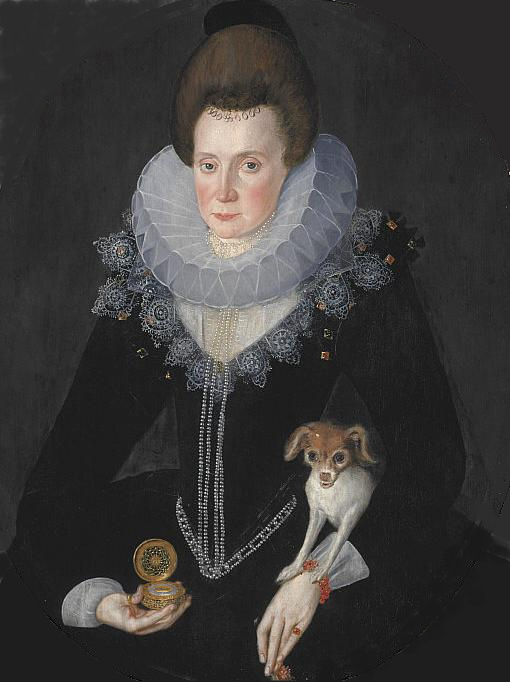by Susan Flantzer
© Unofficial Royalty 2020
Mary, Queen of Scots was beheaded at Fotheringhay Castle in Northamptonshire, England on February 8, 1587. She was 44-years-old and had spent the last nineteen years of her life imprisoned in English castles Mary was the last of five Stewart/Stuart monarchs of Scotland who died a violent death: James I, King of Scots was assassinated, James II was accidentally killed when a cannon nearby where he was standing exploded, and James III and James IV were killed in battle.
Mary, Queen of Scots

Mary, Queen of Scots, circa 1559; Credit – Wikipedia
Born on December 8, 1542, at Linlithgow Palace in Scotland, Mary became Queen of Scots when she was six-days-old upon the death of her father. She was the third and the only surviving child of James V, King of Scots and his second wife Marie of Guise, a French princess. James V was the son of James IV, King of Scots and Margaret Tudor, the eldest surviving daughter of King Henry VII of England, and the sister of King Henry VIII of England. Therefore, Mary’s father was the nephew of King Henry VIII and the first cousin of his children, all monarchs of England, King Edward VI, Queen Mary I, and Queen Elizabeth I. All of Henry VIII’s children turned out to be childless, and this gave their first cousin once removed, Mary, Queen of Scots, a strong claim to the English throne.

Mary and her first husband François II, King of France; Credit – Wikipedia
In July 1548, the Scottish Parliament approved Mary’s marriage to François, Dauphin of France, the son and heir of King Henri II of France and Catherine de’ Medici. On August 7, 1548, five-year-old Mary, Queen of Scots set sail for France where she would be raised with her future husband. She would not return to Scotland for thirteen years. Upon the death of his father in 1559, and Mary’s husband succeeded his father as King François II of France. However, François died after only a 17-month reign and 18-year-old Mary returned to Scotland in 1561.
During Mary’s thirteen-year absence, the Protestant Reformation had swept through Scotland, led by John Knox, considered the founder of the Presbyterian Church of Scotland. Therefore, Catholic Mary returned to a very different Scotland from the one she had left as a child. Mary needed an heir, so a second marriage became necessary. Her choice was her first cousin Henry Stuart, Lord Darnley. Both Mary and Darnley were grandchildren of Margaret Tudor. Darnley was the son of Lady Margaret Douglas, Margaret Tudor’s only child from her second marriage to Archibald Douglas, 6th Earl of Angus. Mary and Darnley married at Holyrood Palace on July 29, 1565. They had one child, James VI, King of Scots, the future King James I of England, who succeeded Queen Elizabeth I of England.

Mary with her second husband, Henry Stuart, Lord Darnley; Credit – Wikipedia
Mary’s marriage with Darnley was unsuccessful and she began to be drawn to James Hepburn, 4th Earl of Bothwell. Bothwell entered into a conspiracy with Archibald Campbell, 5th Earl of Argyll and George Gordon, 5th Earl of Huntly to rid Mary of her husband. On February 10, 1567, Darnley was killed when the house he was staying at was blown up.
Mary and Bothwell were married on May 15, 1567. The marriage angered many Scottish nobles who raised an army against Mary and Bothwell. After negotiations at the Battle of Carberry Hill, Bothwell was given safe passage and the lords took Mary to Edinburgh. The following night, Mary was imprisoned in Loch Leven Castle, on an island in the middle of Loch Leven. Between July 20-23, 1567, Mary miscarried twins, and on July 24, 1567, she was forced to abdicate in favor of her one-year-old son James, whom she never saw again. Bothwell was driven into exile. He was imprisoned in Denmark, became insane, and died in 1578.
In 1568, Mary escaped from her imprisonment at Loch Leven Castle. After being defeated at the Battle of Langside by the forces of her Protestant illegitimate half-brother, James Stewart, Earl of Moray, Mary was forced to flee to England, where she was subsequently imprisoned by her first cousin once removed, Queen Elizabeth I of England, because Elizabeth saw Mary as a threat to her throne. Mary was first taken to Carlisle Castle and then moved to Bolton Castle because it was further from the Scottish border.
In 1569, Mary was moved to Tutbury Castle and placed in the custody of George Talbot, 6th Earl of Shrewsbury and his wife Bess of Hardwick. From 1569 – 1585, Mary was confined to properties of Shrewsbury, including Sheffield Castle, Sheffield Manor Lodge, Wingfield Manor, and Chatsworth House, all of which were in the interior of England and away from the sea for security reasons. In 1585, Mary was moved to Chartley Hall in Staffordshire, England and Sir Amias Paulet became her keeper. Mary was always held in comfortable captivity, with her own domestic staff, which never numbered fewer than sixteen. Her chambers were decorated with fine tapestries and carpets, her bedlinens were changed daily, her own chefs prepared meals served on silver plates, and sometimes she was allowed outside to walk and ride.
- For more information, see Unofficial Royalty: Mary, Queen of Scots
Why was Mary, Queen of Scots executed?

Mary in captivity, 1578; Credit – Wikipedia
Since Mary was Catholic, she was seen by many English Catholics as the legitimate English sovereign instead of the Protestant Elizabeth I. There were various plots to replace Elizabeth on the English throne with Mary, possibly without Mary’s knowledge. After the 1583 Throckmorton Plot, Elizabeth I issued a decree preventing all communication to and from Mary. However, William Cecil, 1st Baron Burghley, Elizabeth’s Secretary of State and Sir Francis Walsingham, Elizabeth’s spymaster, who wanted to entrap Mary, realized that the decree would hinder their plans.
Walsingham established a new line of communication that he could control without Mary’s knowledge. With the help of Gilbert Gifford, a double agent, it was arranged for a local brewer to deliver and receive messages between Mary and her supporters by placing them in a watertight casing inside the stopper of a beer barrel which would be delivered and then picked up at Chartley Hall in Staffordshire, England where Mary was confined. Double agent Gilbert Gifford approached the unsuspecting Guillaume de l’Aubespine, the French ambassador to England, and described the new correspondence arrangement designed by Walsingham. Gifford then submitted a code table to de l’Aubespine supplied by Walsingham and requested the first message be sent to Mary.

Cipher and code tables of Mary in the United Kingdom National Archives; Credit – Wikipedia
All messages to Mary would be sent via diplomatic packets to the French ambassador de l’Aubespine who then passed them on to double agent Gifford. Gifford would then pass the messages on to Walsingham who would have them decoded. The letter was then resealed and returned to Gifford who would pass it on to the brewer. The brewer would then smuggle the letter to Mary. If Mary sent a letter to her supporters, it would go through the reverse process. Every message coming to and from Chartley Hall was intercepted and read by Walsingham.

The letter that incriminated Mary, from the United Kingdom National Archives; Credit – Wikipedia
Eventually, the Babington Plot was detected. The goals of the Babington Plot were to assassinate Elizabeth I and then for England to be invaded by Spanish-led Catholic forces. When Mary consented to the plot by replying to a letter, her days were numbered.
There were fourteen conspirators:
- Anthony Babington, a 25-year-old Catholic nobleman
- John Ballard, an English Jesuit priest
- Chidiock Tichborne, a Catholic poet
- Thomas Salisbury
- Henry Donn
- Robert Barnewell
- John Savage
- Edward Habington
- Charles Tilney
- Edward Jones
- John Charnock
- John Travers
- Jerome Bellamy
- Robert Gage
What happened to the conspirators?

Anthony Babington; Credit – Wikipedia
John Ballard was arrested on August 4, 1586, and under torture, he confessed and implicated Anthony Babington. All of the conspirators were arrested by August 15, 1586. They were tried at Westminster Hall in London on September 13-14, 1586, found guilty of treason and conspiracy, and sentenced to be executed.
On September 20, 1586, Ballard along with Babington, Tichborne, Salisbury, Donn, Barnewell, and Savage were executed by hanging, drawing, and quartering. Their horrific and bloody executions shocked the witnesses. When Elizabeth I was told of their suffering and the shock of the witnesses, she gave a slight reprieve to the remaining seven conspirators who were to be executed the next day. She ordered that they were to be left hanging until they were dead before being cut down, disemboweled, and quartered.
What happened to Mary, Queen of Scots?
On August 11, 1586, Mary was riding from Chartley Hall with her musician Bastian Pagez, her doctor Dominique Bourgoing, and others. They were surprised by armed soldiers who took them to nearby Tixall Hall so that Mary’s rooms at Chartley Hall could be searched and her papers could be seized. Mary was kept at Tixall Hall until late September 1586, when she was moved to her final place of imprisonment, Fotheringhay Castle in Northamptonshire where King Richard III of England had been born.

Contemporary drawing of the trial of Mary, Queen of Scots; Credit – Wikipedia
In October 1586, at Fotheringhay Castle, Mary was tried for treason before a court of thirty-six commissioners appointed by Elizabeth I, including the two men who had plotted her downfall, William Cecil, 1st Baron Burghley and Sir Francis Walsingham. She protested that as a foreign anointed queen she had never been an English subject and therefore could not be convicted of treason. Mary was not permitted legal counsel, to review the evidence against her, or to call witnesses. On October 25, 1586, Mary was convicted of treason and sentenced to death with only one commissioner, Edward la Zouche, 11th Baron Zouche, voting against the conviction and death penalty.
Queen Elizabeth I procrastinated signing Mary’s death warrant. She was reluctant to sign the death warrant of an anointed queen as she felt it would set a bad precedent and feared that Mary’s son James VI, King of Scots, now twenty years old, would form an alliance and invade England. Additionally, Elizabeth feared the reaction of her Catholic subjects and Catholic Europe. With the intense pressure from Parliament and her Council continuing, Elizabeth finally signed the death warrant on February 1, 1587, and it was immediately sent to Fotheringhay Castle. Later, Elizabeth would deny that she had approved the sending of the death warrant to Fotheringhay Castle and punished those responsible.
The Execution

Execution of Mary Stuart, Queen of Scotland, from Robert Beale’s The Order and Manner of the Execution of Mary Queen of Scots, Feb. 8, 1587; Credit – Wikipedia
The death warrant arrived at Fotheringhay Castle on February 7, 1587. Having just found out she was to be executed the next day, Mary spent her final night praying in the castle’s small chapel. She wrote her last letter to King Henri III of France, the brother of her first husband. At two in the morning, Mary lay down on her bed but did not sleep. Throughout the rest of the night, the sound of hammering came from the Great Hall where the scaffold was being built.
Mary’s request to have her ladies and servants accompany her to her execution was initially denied. Mary countered with the disbelief that Elizabeth I would allow her to die without any ladies to attend her. She further explained that she was “cousin to your Queen, descended from the blood of Henry VII, a married Queen of France, and the anointed Queen of Scotland.” After some discussion, it was decided that Mary could choose six servants to accompany her. Her secretary James Melville, her doctor Dominique Bourgoing, her surgeon Jacques Gervais, and her porter Didier were allowed to accompany her. In addition, her ladies Jane Kennedy and Elizabeth Curle were also allowed to accompany her.

Mary on the way to the scaffold by Scipione Vannutelli, 1861; Credit – Wikipedia
Three hundred people had gathered in the Great Hall of Fotheringhay Castle to witness the execution of Mary, Queen of Scots on February 8, 1587. Mary wore a black satin dress embroidered with black velvet. On her head, she wore a white peaked headdress with a white veil flowing down her back. Mary held a crucifix and a prayer book in her hands. Two rosaries hung from her waist. Around her neck, she wore a pomander and an Agnus Dei, a disc of wax impressed with the figure of a lamb.
The scaffold, draped with black fabric, was in the center of the Great Hall. On the scaffold were the block, a cushion for Mary to kneel on, and three stools, for Mary and the official witnesses, George Talbot, 6th Earl of Shrewsbury and Henry Grey, 6th Earl of Kent. Mary was led up the three steps to the scaffold and listened calmly as the commission for her execution was read aloud. When Richard Fletcher, the Protestant Dean of Peterborough Cathedral began Protestant payers, Mary said, “I am settled in the ancient Catholic Roman religion and mind to spend my blood in defense of it.” The Dean continued to pray and Mary also began to pray in Latin from her prayer book. When the Dean had finished praying, Mary switched to English and prayed aloud for the English Catholic Church, her son, and Elizabeth that she might serve God in the years to come.
When Mary was done praying, the executioner asked for forgiveness for taking her life. Mary answered, “I forgive you with all my heart for now I hope you shall make an end to all my troubles.” Then the executioner assisted by Mary’s ladies Jane Kennedy and Elizabeth Curle helped Mary to undress. When her black dress was removed, Mary was wearing a red petticoat, trimmed with lace with a low neckline and back. Mary’s ladies gave her a pair of red sleeves. She was now dressed all in red, the color of blood, and the liturgical color of martyrdom in the Roman Catholic Church.
Embed from Getty Images
Mary’s rosary and prayer book
It was the usual practice for executioners to receive any items of adornment that the condemned person was wearing. When the executioner touched Mary’s gold rosary, Jane Kennedy protested. Mary intervened saying that the executioner would be compensated with money in lieu of the rosary and the Agnus Dei. The beautiful gold rosary was meant for Mary’s friend Anne Dacre, the wife of Philip Howard, 13th Earl of Arundel, canonized a saint in 1970. Jane Kennedy later delivered the rosary to Anne and it has been in the possession of the Earl of Arundel’s descendants, the Dukes of Norfolk, ever since. However, on May 21, 2021, burglar alarms alerted staff at Arundel Castle, the home of the Dukes of Norfolk. Items of great historical significance, including Mary’s rosary, were stolen by force from a display cabinet.
Mary remained calm and admonished her weeping women to stop their crying. Mary then turned to her four male servants sitting on benches, smiled at them, and told them to be comforted. The time had come for the execution. Jane Kennedy had a white cloth embroidered in gold. She kissed the cloth and gently wrapped it over Mary’s eyes and over her head so that her hair was covered and her neck was bare. Then Jane Kennedy and Elizabeth Curle left the scaffold.

This watercolor was made for a Dutch magistrate who compiled an album of historical prints and drawings in 1613. The costume and architecture look very Dutch, but the picture does reflect eyewitness accounts of the event. Mary’s clothes were burned to prevent supporters from keeping them as relics, and this scene is shown on the far left. Credit Wikipedia from the National Portrait Gallery of Scotland
Mary knelt down on the cushion in front of the block. She said, in Latin, the psalm “In you Lord is my trust, let me never be confounded.” Mary then felt for the block and put her head down on it. She stretched out her arms and legs and cried in Latin, “Into your hands, O Lord, I commend my spirit” three or four times. The executioner’s assistant put his hand on her body to steady her. The first blow missed her neck and cut into the back of her head. Her servants thought they heard her say, “Sweet Jesus.” The second blow severed her neck except for a small sinew which was cut by using the ax as a saw.
The executioner held up Mary’s head and said, “God save the Queen!” However, Mary’s auburn hair separated from her head which then fell to the floor. Mary’s hair had been gray and cut very short and she had chosen to wear an auburn wig. The spectators sat stunned until the Dean of Peterborough called out, “So perish all the Queen’s enemies!” The Earl of Kent then cried out, “Such be the end of all the Queen’s and the Gospels’ enemies.” The Earl of Shrewsbury, Mary’s official keeper between 1569 and 1585, sat on the scaffold speechless, with tears streaming down his face. Then, Mary’s lapdog, a Skye terrier, appeared from under Mary’s red petticoat and sadly stationed itself between Mary’s head and her shoulder.
The Earl of Shrewsbury’s eldest son rode hard to London to break the news of Mary’s execution to Queen Elizabeth I. He reached London at nine the next morning. Elizabeth first received the news with indignation which quickly turned to distress and then sorrow and many tears.
Aftermath

Copy of Mary’s death mask at Falkland Palace in Scotland; By Kim Traynor – Own work, CC BY-SA 3.0, https://commons.wikimedia.org/w/index.php?curid=21201424
Mary had requested that she be buried in France at either the Basilica of Saint-Denis near Paris, the traditional burial site of the French royal family, or Reims Cathedral but Elizabeth denied her request. Mary’s ladies and servants were allowed one requiem mass to be said for Mary by Father de Preau, her almoner and confessor, on the morning after her execution.
Mary’s body was embalmed and her heart and entrails, removed as part of the embalming process, were buried secretly within Fotheringhay Castle to prevent them from becoming relics. Mary’s body was wrapped in a wax winding-sheet, put in a lead coffin, and left in Fotheringhay Castle until August 1, 1587, when she were buried at Peterborough Cathedral where Catherine of Aragon, King Henry VIII’s first wife had been buried.
In 1603, as Queen Elizabeth I, the last of the Tudors, lay dying, she gave her assent that Mary, Queen of Scots’ son James VI, King of Scots, should succeed her. By primogeniture, James was the next in line to the English throne. Elizabeth died on March 24, 1603. Now James I, King of England and James VI, King of Scots, Mary’s son entered London on May 7, 1603, and his coronation was held on July 25, 1603. In 1612, the remains of Mary, Queen of Scots were exhumed upon the orders of her son and were reburied in a marble tomb with a beautiful effigy in Westminster Abbey in a chapel directly across the aisle from the chapel containing the tomb of Queen Elizabeth I. Mary, Queen of Scots is the ancestor of the current British royal family and many other European royal families.

Tomb of Mary, Queen of Scots in Westminster Abbey; Credit – Wikipedia
This article is the intellectual property of Unofficial Royalty and is NOT TO BE COPIED, EDITED, OR POSTED IN ANY FORM ON ANOTHER WEBSITE under any circumstances. It is permissible to use a link that directs to Unofficial Royalty.
Works Cited
- En.wikipedia.org. (2019). Babington Plot. [online] Available at: https://en.wikipedia.org/wiki/Babington_Plot [Accessed 25 Nov. 2019].
- En.wikipedia.org. (2019). Mary, Queen of Scots. [online] Available at: https://en.wikipedia.org/wiki/Mary,_Queen_of_Scots [Accessed 25 Nov. 2019].
- Flantzer, Susan. (2016). Mary, Queen of Scots. [online] Unofficial Royalty. Available at: https://www.unofficialroyalty.com/mary-queen-of-scots/ [Accessed 25 Nov. 2019].
- Fraser, Antonia. (1969). Mary Queen of Scots. New York: Dell Publishing Company.
- Weir, Alison. (2003). Mary, Queen of Scots and the Murder of Lord Darnley. New York: Ballantine Books.
